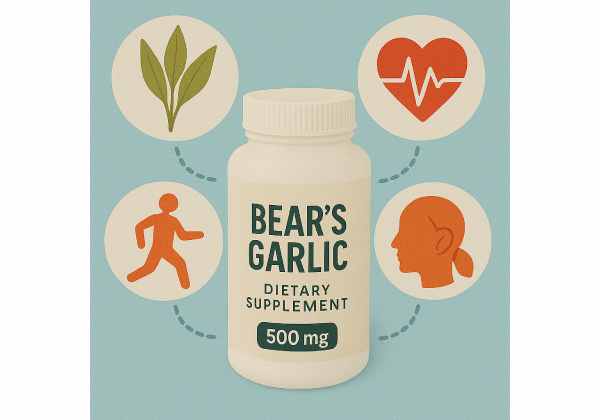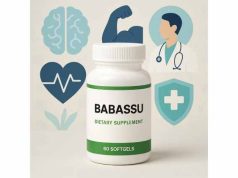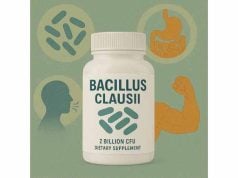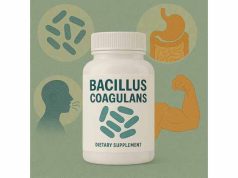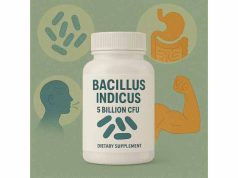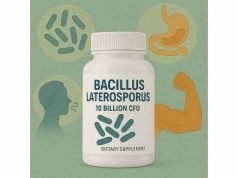Is bear’s garlic the secret to heart and immune health? This wild European herb, also called wild garlic or Allium ursinum, has roots in folk medicine and is now studied for its ability to support cardiovascular wellness, natural detoxification, and immune resilience. Bear’s garlic is rich in sulfur compounds, antioxidants, and plant nutrients that may help lower blood pressure, balance cholesterol, and fight inflammation—making it a favorite among herbalists and wellness seekers. In this in-depth guide, we’ll explore exactly what bear’s garlic is, its active compounds, the science behind its benefits, proper usage, potential side effects, and how to choose and use this supplement safely.
Key Takeaways
- Bear’s garlic is a wild herb valued for supporting cardiovascular, immune, and digestive health.
- Contains natural compounds shown to help lower blood pressure and cholesterol, and provide antioxidant protection.
- Commonly used as a supplement, tincture, or culinary herb; best results come from standardized, quality-controlled sources.
- Side effects are rare but may include digestive upset or allergic reactions in sensitive people.
- Not a replacement for prescription medications—consult a healthcare provider before use if you have health conditions.
Table of Contents
- Bear’s Garlic Plant Background, Traditional Use, and Supplement Overview
- How Bear’s Garlic Works: Bioactive Compounds and Scientific Mechanisms
- Core Benefits and Evidence-Based Uses of Bear’s Garlic
- Bear’s Garlic Safety Profile, Side Effects, and Drug Interactions
- Bear’s Garlic Dosage: Forms, Timing, and Administration Guidelines
- Bear’s Garlic FAQ: Top Questions and Answers
Bear’s Garlic Plant Background, Traditional Use, and Supplement Overview
Bear’s garlic, also known as wild garlic, ramsons, or Allium ursinum, is a perennial plant found in damp woodlands across Europe and parts of Asia. Its bright green, lance-shaped leaves and delicate white flowers appear in early spring, and its pungent garlic aroma fills the forest floor.
What Is Bear’s Garlic?
- Botanical family: Like cultivated garlic and onions, bear’s garlic is part of the Allium family, but it’s unique in both flavor and active compounds.
- Wild heritage: The plant’s common name comes from the belief that brown bears eat the leaves after hibernation for strength and vitality.
- Edible parts: Leaves, stems, bulbs, and flowers are all used, though supplements most often use the leaves for their high concentration of beneficial sulfur compounds.
Traditional and Folk Uses
For centuries, bear’s garlic has been valued by herbalists for:
- Supporting healthy digestion and relieving bloating or cramps
- Cleansing the blood and “detoxifying” the body after winter
- Strengthening the immune system and warding off seasonal infections
- Acting as a mild diuretic and promoting kidney function
In folk medicine, it’s sometimes called “nature’s blood cleanser,” believed to support vitality, circulation, and overall wellness.
Modern Supplementation
Today, bear’s garlic is available in a variety of forms:
- Capsules/tablets: Standardized for allicin or alliin content, ensuring consistent potency.
- Tinctures/liquid extracts: Fast-absorbing, popular for those who dislike swallowing pills.
- Dried or fresh herb: Used in teas, soups, salads, or as a culinary spice.
- Oil extracts: Occasionally found in blends for cardiovascular or immune support.
Supplements may be labeled as wild garlic, ramsons, or Allium ursinum extract—check the label for source, potency, and quality.
Key Compounds in Bear’s Garlic
Bear’s garlic’s wellness benefits are linked to:
- Sulfur compounds: Allicin, alliin, and related molecules, also found in common garlic but in unique ratios.
- Flavonoids: Plant antioxidants that support blood vessel health and immune function.
- Vitamins and minerals: Vitamin C, manganese, magnesium, and trace elements.
- Chlorophyll: Abundant in fresh leaves, supports detoxification and antioxidant defense.
Who Uses Bear’s Garlic Supplements?
- Adults seeking natural cardiovascular or blood pressure support
- Individuals interested in immune or digestive health
- People looking for gentle “spring cleansing” or detox regimens
- Herbalists and those following traditional European wellness practices
Culinary Uses
Bear’s garlic is also celebrated in the kitchen for its mild, fresh garlic taste—less pungent than cultivated garlic and ideal in pestos, soups, omelets, and salads.
How Is Bear’s Garlic Different from Regular Garlic?
While both are Allium species, bear’s garlic contains different ratios of sulfur compounds and unique phytochemicals that may offer distinct health benefits. It’s milder in flavor and less likely to cause garlic breath.
Summary Table: Bear’s Garlic Key Facts
| Attribute | Details |
|---|---|
| Botanical name | Allium ursinum |
| Edible parts | Leaves, stems, bulbs, flowers |
| Main benefits | Cardiovascular, immune, digestive |
| Forms available | Capsules, tinctures, dried herb |
| Culinary value | Mild, fresh, aromatic garlic flavor |
Bear’s garlic brings together the best of wild herbal tradition and modern science—making it an exciting, versatile supplement for those seeking gentle, plant-based wellness.
How Bear’s Garlic Works: Bioactive Compounds and Scientific Mechanisms
Bear’s garlic owes its health benefits to a potent mix of sulfur compounds, antioxidants, and micronutrients. Understanding how these bioactives interact in the body is key to appreciating why this wild herb is so widely used for natural cardiovascular, immune, and detox support.
Key Active Compounds
- Allicin: The signature sulfur molecule released when the leaves are crushed, giving bear’s garlic its familiar aroma and strong antimicrobial, antioxidant, and blood vessel effects.
- Alliin: The stable precursor to allicin; converted when the plant is chopped or chewed.
- Other organosulfur compounds: Includes diallyl disulfide, ajoene, and S-methylcysteine—each with unique roles in health.
- Flavonoids: Antioxidant pigments that help protect cells from damage and support healthy blood vessels.
- Vitamins/minerals: Rich in vitamin C, magnesium, and iron, which complement its herbal actions.
How Bear’s Garlic Supports Wellness
Cardiovascular Health
- Blood pressure regulation: Sulfur compounds in bear’s garlic relax blood vessels, promoting healthy circulation and potentially lowering high blood pressure.
- Cholesterol management: Animal and early human studies suggest bear’s garlic may reduce total and LDL (“bad”) cholesterol while maintaining healthy HDL (“good”) cholesterol.
- Antiplatelet effect: Like common garlic, bear’s garlic may mildly reduce blood clotting—supporting overall heart health.
Immune and Antimicrobial Support
- Antibacterial and antiviral: Allicin has strong activity against bacteria, viruses, and fungi, making bear’s garlic a traditional remedy for colds and seasonal infections.
- Immune modulation: Regular use may enhance white blood cell activity and reduce inflammation.
Detoxification and Antioxidant Activity
- Liver support: Sulfur compounds and chlorophyll may assist the liver in neutralizing and removing toxins.
- Antioxidant defense: Bear’s garlic helps neutralize free radicals, protecting cells from oxidative stress linked to aging and chronic disease.
Digestive and Gut Wellness
- Prebiotic effect: Some fibers in bear’s garlic may feed beneficial gut bacteria.
- Digestive comfort: Traditionally used to soothe bloating, mild cramps, or sluggish digestion.
Modern Research and Traditional Wisdom
While more clinical trials are needed, animal and laboratory studies back up many of bear’s garlic’s traditional uses—especially for cardiovascular and immune health.
How Does Bear’s Garlic Compare to Cultivated Garlic?
Bear’s garlic provides similar but sometimes milder cardiovascular and immune benefits. For those sensitive to regular garlic, bear’s garlic may be easier to tolerate, with less risk of digestive discomfort.
Is It Safe for Long-Term Use?
Bear’s garlic has a long record of safe culinary and supplemental use in Europe. Still, high-dose supplements should be used with care, especially if you’re on blood thinners or have digestive sensitivities.
Summary Table: Bear’s Garlic Mechanisms
| Mechanism | Primary Target |
|---|---|
| Sulfur compounds | Heart, vessels, liver |
| Flavonoids | Immunity, blood vessels |
| Antioxidants | Cellular protection |
| Prebiotics | Digestive health |
Bear’s garlic is more than a culinary delight—it’s a multi-faceted herbal supplement, working on several levels to support holistic wellness.
Core Benefits and Evidence-Based Uses of Bear’s Garlic
Bear’s garlic stands out among wild herbs for its wide-ranging health benefits, which are increasingly supported by research. Below, discover the primary uses of this versatile plant, who may benefit most, and realistic expectations.
1. Cardiovascular Support and Blood Pressure Regulation
One of the best-established uses for bear’s garlic is as a natural ally for heart health:
- Lowers blood pressure: The plant’s sulfur compounds relax and dilate blood vessels, making it popular among those with mild hypertension.
- Balances cholesterol: Early studies and centuries of use suggest it helps lower LDL cholesterol and supports healthy HDL cholesterol.
- Protects blood vessels: Its antioxidant action helps prevent the oxidation of LDL cholesterol, a key factor in atherosclerosis.
2. Immune Boosting and Infection Defense
- Antimicrobial effects: Allicin and related compounds make bear’s garlic a traditional go-to for preventing or fighting respiratory and digestive infections.
- Supports resilience: Some users report fewer seasonal illnesses when taking bear’s garlic during high-risk periods.
3. Natural Detoxification and Liver Health
- Supports natural cleansing: Bear’s garlic’s chlorophyll and sulfur content are believed to support liver detoxification pathways and elimination of metabolic waste.
- Spring “cleansing” traditions: Many cultures use bear’s garlic as part of seasonal detox rituals to “renew” the body after winter.
4. Digestive Comfort and Gut Wellness
- Relieves bloating and cramps: Used in teas or supplements to promote gentle digestive balance.
- Promotes regularity: Fiber and prebiotics in bear’s garlic can help maintain healthy gut flora and regular bowel habits.
5. Antioxidant and Anti-Inflammatory Support
- Reduces oxidative stress: Antioxidants in bear’s garlic help neutralize free radicals, protecting cells and tissues from age-related damage.
- Calms inflammation: May help soothe low-grade inflammation, supporting joint and tissue health.
Who May Benefit Most?
- Adults seeking natural cardiovascular or blood pressure support
- People with elevated cholesterol or early metabolic risk factors
- Anyone prone to seasonal infections or wanting gentle immune support
- Those interested in traditional or food-based detoxification approaches
- Individuals with occasional digestive discomfort or sluggishness
Limitations and Realistic Expectations
- Not a replacement for prescription medications: Bear’s garlic works best as part of a comprehensive wellness plan.
- Results build gradually: Benefits such as lower blood pressure or improved digestion may take weeks of consistent use.
- Individual response varies: Genetics, diet, and baseline health all influence results.
Summary Table: Bear’s Garlic Main Benefits
| Benefit | Best For |
|---|---|
| Blood pressure/cholesterol | Cardiovascular support |
| Immune resilience | Seasonal protection |
| Detox and cleansing | Liver/kidney wellness |
| Digestive comfort | Bloating, regularity |
| Antioxidant defense | Healthy aging |
Bear’s garlic’s wide appeal lies in its ability to gently support multiple facets of health—making it a valuable addition to many natural wellness routines.
Bear’s Garlic Safety Profile, Side Effects, and Drug Interactions
Bear’s garlic (Allium ursinum) is generally recognized as safe when used in moderation, whether consumed as a food, tea, or supplement. Its long tradition in culinary and folk medicine settings is matched by a strong safety record, but it’s still important to understand potential side effects, who should use caution, and how it might interact with medications.
Common and Mild Side Effects
For most healthy adults, bear’s garlic does not cause significant side effects when taken at recommended doses. However, as with any supplement or herbal remedy, some users may notice:
- Digestive upset: Occasional mild stomach discomfort, heartburn, or loose stools—especially in those with sensitive digestion or when using concentrated extracts.
- Garlic odor: Bear’s garlic contains volatile sulfur compounds, which may impart a mild garlic scent to the breath or skin, but this is typically less pronounced than with cultivated garlic.
- Allergic reactions: Rare, but possible. Symptoms may include skin rash, itching, or swelling, particularly in individuals with allergies to plants in the Allium family (onion, garlic, leeks).
Rare and Serious Side Effects
- Severe allergy or anaphylaxis: Extremely rare, but can occur in individuals with strong Allium allergies. Immediate medical attention is necessary for any signs of swelling, difficulty breathing, or throat tightness.
- Gastrointestinal bleeding: Also very rare, but individuals with a history of ulcers, gastritis, or bleeding disorders should use caution.
Who Should Avoid or Use Caution with Bear’s Garlic?
- Pregnant or breastfeeding women: Limited research exists, so always consult a healthcare provider before use.
- Children: Safety for children has not been well established.
- People with Allium allergies: Avoid bear’s garlic in any form.
- Patients scheduled for surgery: Bear’s garlic may mildly reduce blood clotting; discontinue use at least 2 weeks before surgery.
- Individuals with bleeding disorders or on anticoagulant therapy: Consult your doctor before use, as bear’s garlic may enhance the effects of blood-thinning medications.
Drug and Supplement Interactions
Bear’s garlic may interact with the following:
- Blood thinners (anticoagulants and antiplatelets): The herb’s mild antiplatelet effects can enhance the action of drugs like warfarin, clopidogrel, or aspirin.
- Blood pressure medications: Bear’s garlic may lower blood pressure. When combined with antihypertensives, it could cause levels to drop too low in sensitive individuals.
- Diabetes medications: While rare, there is a potential for enhanced blood sugar-lowering effects if used with antidiabetic drugs.
- Other supplements with similar effects: Caution is advised when combining bear’s garlic with supplements like fish oil, high-dose vitamin E, or other natural blood thinners.
Long-Term Use and Cumulative Effects
Bear’s garlic has been safely consumed for extended periods as part of traditional diets. Supplements, especially at higher doses, should be cycled (e.g., used for 6–12 weeks followed by a break) or taken under supervision for long-term regimens.
Signs You Should Discontinue Use
- Persistent digestive discomfort, diarrhea, or abdominal pain
- Signs of allergy such as rash, swelling, or itching
- Easy bruising, bleeding, or nosebleeds
- Unexplained fatigue, weakness, or heart palpitations
How to Minimize Side Effects
- Start low, go slow: Begin with a small dose, especially if you have not used Allium herbs before.
- Take with food: Reduces the likelihood of stomach upset.
- Hydrate well: Supports healthy digestion and excretion of sulfur compounds.
Myths and Facts about Bear’s Garlic Safety
- Myth: “Bear’s garlic is always gentler than cultivated garlic.”
Fact: While often milder, concentrated extracts can still cause side effects in sensitive individuals. - Myth: “Natural means risk-free.”
Fact: Even natural supplements can interact with medications or trigger allergies.
Final Thoughts on Safety
Bear’s garlic is a gentle and generally well-tolerated herbal supplement, but its natural potency deserves respect—especially if you’re taking prescription medications or have underlying health conditions. As always, personalize your use and check with a healthcare professional if you’re unsure.
Bear’s Garlic Dosage: Forms, Timing, and Administration Guidelines
To fully experience the benefits of bear’s garlic, it’s essential to use the right dosage, choose an appropriate form, and time your intake wisely. Below are the most effective, evidence-informed ways to supplement with bear’s garlic for general wellness, heart health, and immune support.
Common Dosage Guidelines
- Capsules/tablets: Most supplements provide 300–600 mg of standardized bear’s garlic extract per capsule. Typical daily dose ranges from 600–1,200 mg, divided into two or three doses.
- Tinctures/liquid extracts: Often dosed at 1–3 ml, taken up to three times daily in water or juice.
- Dried or fresh leaves: When used as a culinary herb, a handful of fresh leaves (5–10 g) per day is common. For tea, 2–4 g dried leaf steeped in hot water, once or twice daily.
- Oil macerates: Less commonly used for supplements, but may appear in combination formulas.
How and When to Take Bear’s Garlic
- With food: Taking bear’s garlic with meals helps reduce digestive discomfort and supports nutrient absorption.
- Regular timing: Spread doses throughout the day (e.g., morning and evening) for steady effects, particularly for blood pressure or cholesterol support.
- Culinary use: Incorporate fresh leaves into salads, pestos, or soups for gentle, ongoing benefits.
Choosing the Right Form
- Standardized capsules: Offer precise, consistent dosing for clinical applications.
- Tinctures: Allow for flexible, individualized dosing and fast absorption.
- Fresh/dried herb: Ideal for culinary or traditional “spring cleanse” purposes.
Can You Take Bear’s Garlic Every Day?
Yes, bear’s garlic can be safely used daily for most healthy adults, especially when consumed as food. Supplement cycles (e.g., 6–12 weeks on, 2–4 weeks off) are a good option for higher doses or concentrated extracts.
Dosage Adjustments for Special Needs
- Mild hypertension or cholesterol support: 600–1,200 mg extract daily, or 2–3 ml tincture, divided doses.
- Immune or seasonal use: Lower end of the dosage range is sufficient; combine with a healthy diet and other lifestyle measures.
- Digestive wellness: Teas or culinary preparations may be preferable for sensitive digestion.
Practical Tips for Best Results
- Monitor your response: Track blood pressure, cholesterol, or immune changes over several weeks.
- Pair with healthy habits: For best results, combine with a diet rich in whole foods and regular physical activity.
- Source matters: Choose products from reputable brands, with clear labeling and third-party testing when possible.
Missed a Dose?
Simply resume your regular schedule with the next dose. There is no need to double up.
Table: Dosage and Form at a Glance
| Form | Dose Range | Best For |
|---|---|---|
| Capsules/tablets | 600–1,200 mg/day | Consistent, clinical dosing |
| Tincture/extract | 1–3 ml, 1–3x daily | Flexible, rapid absorption |
| Dried/fresh leaves | 2–10 g/day (food/tea) | Culinary, gentle support |
With mindful dosing, timing, and quality product selection, bear’s garlic can become a valuable part of your daily wellness routine.
Bear’s Garlic FAQ: Top Questions and Answers
What are the main benefits of bear’s garlic supplements?
Bear’s garlic is best known for supporting heart health, helping lower blood pressure and cholesterol, providing antioxidant protection, and boosting immune resilience. It also offers digestive comfort and gentle detox support.
Can bear’s garlic lower blood pressure naturally?
Yes, the sulfur compounds in bear’s garlic may help relax blood vessels and reduce blood pressure, especially in mild hypertension. Effects are gentle and work best alongside a healthy lifestyle.
Are there any side effects to using bear’s garlic?
Most users tolerate bear’s garlic well, but possible side effects include mild stomach upset, garlic odor, or—rarely—allergic reactions. It may mildly increase the effects of blood thinners and blood pressure medications.
How do I take bear’s garlic for best results?
Choose standardized capsules (600–1,200 mg daily), tinctures (1–3 ml up to 3x/day), or fresh/dried leaves in food or tea. Take with meals for best absorption and comfort.
Can I take bear’s garlic with my current medications?
Consult your healthcare provider before combining bear’s garlic with blood thinners, blood pressure, or diabetes medications, as the herb may enhance their effects. Always discuss new supplements with your doctor if you’re on prescription drugs.
Is bear’s garlic the same as regular garlic?
No—bear’s garlic (Allium ursinum) is a wild plant with different ratios of sulfur compounds and a milder flavor. Both have cardiovascular and immune benefits, but bear’s garlic is less likely to cause strong garlic breath.
Where can I buy quality bear’s garlic supplements?
Look for supplements from reputable brands, ideally with third-party testing and standardized levels of active compounds. Fresh or dried leaves may be found at specialty grocers or farmers’ markets in spring.
Disclaimer
The information in this article is provided for educational purposes only and is not a substitute for personalized medical advice, diagnosis, or treatment. Always consult your healthcare provider before beginning any new supplement, especially if you have existing health conditions or take prescription medications.
If you found this guide helpful, please share it with others on Facebook, X (formerly Twitter), or your preferred social platform. Follow us for more evidence-based wellness content, and help support our mission to provide accessible health information for all!


